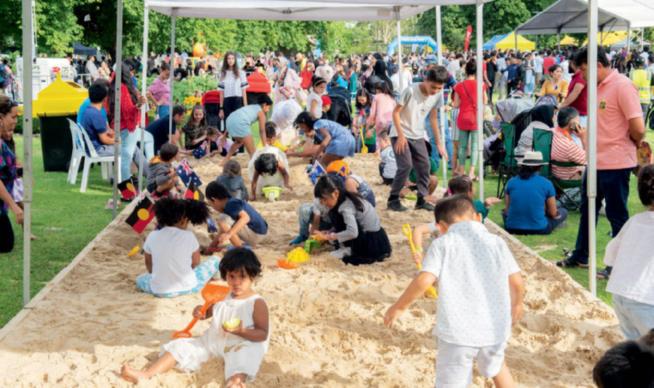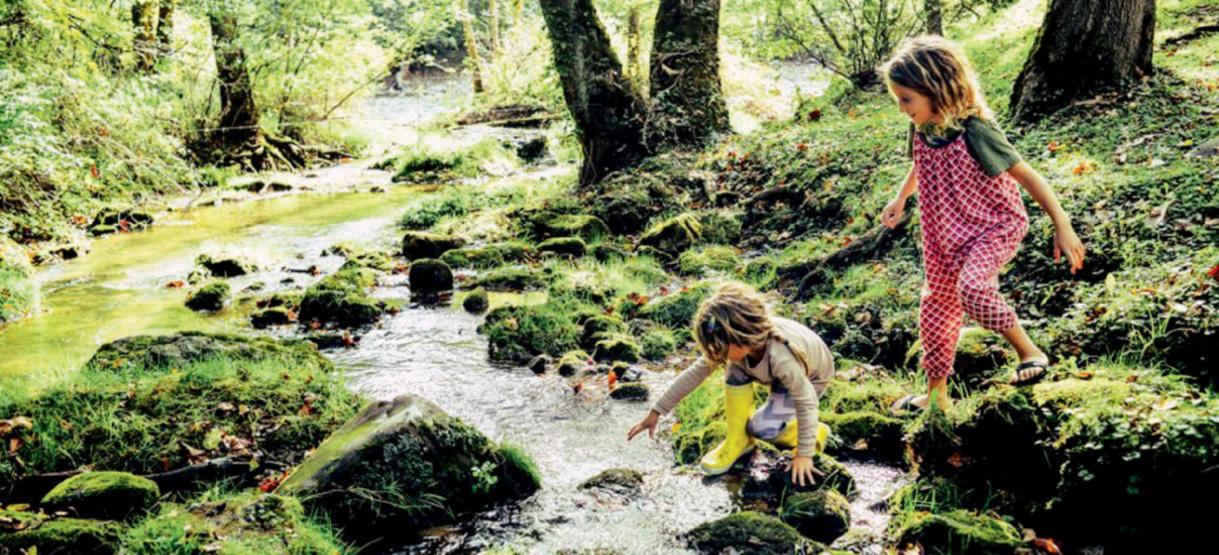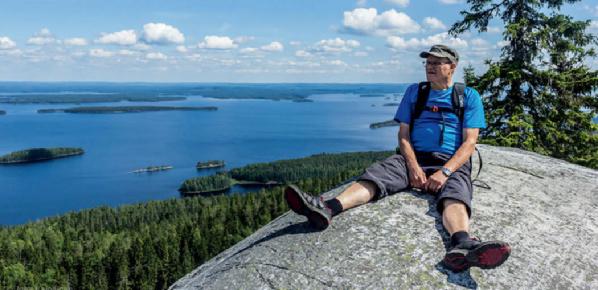
7 minute read
Older People and Parks
OLDER PEOPLE
AND PARKS
PATHWAYS FOR INCLUSIVE PARKS AND OUTDOOR SPACES
WORDS ASSOCIATE PROFESSOR PAZIT LEVINGER, SENIOR RESEARCHER, NATIONAL AGEING RESEARCH INSTITUTE (NARI)
The National Ageing Research Institute (NARI) is a not-for profi t research institute that aims to improve older people’s health and wellbeing. NARI, as a national leading research institute, is pleased to provide input and expertise from our extensive research and community work with older people. NARI is keen to work closely with relevant stakeholders, organisations and local governments to positively impact on the built environment to better suit the ageing population and to assist with future work around the environmental infrastructure as the population grows.
The NARI and PLA VIC/TAS region have recently signed a Memorandum of Understanding to join in partnership in acknowledgement of the research undertaken by the NARI research and the importance of this knowledge for the development of public recreation facilities, spaces and programs for older people.
Global population forecasts suggest the proportion of people aged 60 years and over will continue to increase and will nearly double from 12 percent to 22 percent by 2050. In fact, the World Health Organisation estimated that soon the number of people aged 60 years and older will outnumber children younger than 5 years.1 In Australia, it is projected there will be 8.8 million older people by 2057 (22% of the population compared to 15% recorded in 2017; Australian Institute of Health and Welfare; Older Australia at a glance. 2018: Canberra).
As people get older, numerous underlying physiological changes occur and they become more susceptible to health risks, particularly chronic and degenerative conditions and diseases. Aging can also lead to negative changes in innate and adaptive immunity (impaired immune response), which is a major contributor to poor health in older people. This is likely to predispose older people to greater risk of infections, cancer and chronic infl ammatory disease contributing to age-related multi-morbidity. Decline of physical or cognitive capacities, chronic conditions and illness, and loss of social networks are only a few of many adversities older people face. As we move towards an increasingly older population, it is important to consider the needs of older people to promote healthy ageing and to build outdoor environments and spaces that support active ageing and good health.
The health benefi ts of outdoors, parks and nature is well recognised. It can improve our physical and mental wellbeing as well as our social health. Green and open spaces facilitate contact with nature and provide us with the opportunity to rest, refl ect, and restore our state of mind. However, the valuable role that parks and outdoors play for older people is often overlooked. Access and exposure to urban greenspaces and parks off er great health benefi ts for older people from increased engagement in physical activity to promoting social interaction, improving physical and psychosocial health, as well as promoting longevity.
As older people become less mobile or develop increased physical limitations, their eff ective neighbourhood and local public space are likely to shrink to include the immediate areas near their homes. This means that older people are more likely to be adversely impacted by their local neighbourhood outdoor environments and its design. The design of the physical outdoor environments are therefore required to be carefully planned to meet the physical needs of older people.
There are various methods/approaches that can be incorporated during the design process to maximise safe usage and access by older people. Some tips and recommendations are provided below, and further information can be found in the publication Guidance about agefriendly outdoor exercise equipment and associated strategies to maximise usability for older people. 2
Firstly, the location of the park and its distance to residential areas can infl uence usage; where parks in close proximity to a large target population that are easily accessible are likely to attract visitors. Easy access (by foot/motor vehicle) and the location of nearby amenities and community hubs/facilities (eg. community centres) can also promote greater usage by older people. Proximity to public toilets and adequate lighting is important given the potential existence of visual impairments and incontinence associated with ageing.
Secondly, older people might have physical limitations and hence may need to use walking aids and or hand rails for support. Therefore, safe outdoor spaces should include safe pedestrian infrastructure (sidewalks, trails, even paths), accessible surfaces for people using walking aids or wheelchairs and safe areas
to rest with benches/seating with armrests at suitable heights. The weather can also negatively impact on older people, as their bodies are less able to tolerate stress posed by the environment (extreme hot/cold weather). Benches and sheltered resting areas and a drinking fountain are therefore important to be included.
Thirdly, exercise equipment such as fi tness stations/gyms are very common in recent years and are often installed in parks to promote physical activity. The inclusion of equipment that caters to a range of abilities and ages should be considered, with suitable equipment for safe usage by older people. Older people are recommended to engage in various types of physical activities that promote muscle strength, improve balance, mobility, and cardiorespiratory function. Providing a wide range of outdoor equipment to target these various physiological elements can enhance engagement in physical activity and the associated physical health benefi ts.
As some older people may not be familiar with appropriate usage of equipment, signage with clear and user-friendly instructions and graphic illustrations of an adequate size (and content) to account for potential sensory defi cits should be provided onsite. Similarly, signage indicating the condition of the parks/open spaces (eg. terrain, length) and its suitability for older people with a range of mobility limitations (eg. rails, walking/ trails/path width) is also an important addition as an eff ective communication tool for the public.
Older people often take their grandchildren to local parks to play, but very rarely the play equipment is agefriendly. Intergenerational relationships are imperative to foster, and providing equipment that everyone can safely enjoy and use is important. While children enjoy unstructured play and will naturally use equipment creatively, older people may need organised activities to engage in play and exercise. The social element of engaging in activities, fun and enjoyment are key motivators for older people to engage in physical activity. Providing organised and/or structured outdoor activities (eg. walking groups, exercise classes) can facilitate social interaction and social support, motivating older people to engage in physical activities.
Engagement with older people and community members during the design phase can be very valuable to better care for older people’s needs. Older people are valuable members of our society, they bring a wealth of skills, experience and wisdom. Capturing the voices of this important segment of the community is a vital component in the development of age-friendly parks and outdoor spaces. Therefore, including older people in the planning and the decisions that ultimately aff ect them is likely to result in better decisions and outcomes for all members of the community.
We are facing challenging times with the Covid-19 pandemic impacting our lives and potentially reshaping the future of parks and outdoor spaces. The current crisis has highlighted the importance of parks and outdoor space for our physical and mental health across the lifespan. This has also been refl ected in recent actions by state and local governments, with funds being allocated for the refurbishment and creation of parks and leisure spaces. This off ers a great opportunity for the design and creation of inclusive, equitable and accessible spaces for older people to engage in safe physical and social activities.
REFERENCES
1. WHO: World report on ageing and health. 2015, World Health Organisation: Geneva,
Switzerland. 2. Levinger, P, et al. Guidance about age-friendly outdoor exercise equipment and associated strategies to maximise usability for older people. Health Promot J Austr, 2020.
Urban+ has created smart and sustainable programs for our drinking fountains to lead the way for our industry and drive the circular economy.
Our programs
Choose your Urban+ experience

Select from our subscription, service & maintenance and ownership models
Restore + Refill program
Join our restoration program and restore your Urban+ drinking fountain to ‘like’ new
Urban+ conservation
Help us reduce waste by increasing drinking fountain use and driving water conservation

Find out more about our programs urbanff.com.au
mak a ing i g life fe e bet be e ter r.











